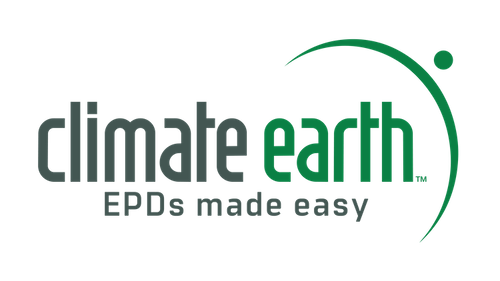EPD 101
FAQ
What is an Environmental Product Declaration (EPD)?
Similar to a nutrition label for food, an EPD is a standardized report used by product manufacturers to provide quality and assured environmental performance information about their products.
What is Business Intelligence?
Business Intelligence is the set of activities and technologies that make up the analyzing, storing, mining and reporting of data in order to transform raw data into meaningful insights for businesses. Climate Earth offers ‘business intelligence’ analytic software tools to help producers evaluate their mix designs based on GWP, plant, materials and many other dimensions.
How do you handle data security?
Climate Earth’s platform provides a highly robust security model protecting data down to the cell level, controlling individual user functionality and controlling application access. Security is implemented at five different layers in production systems: User level Authorization and Authentication, Application Level Access and Control, Data Level, Data Transmission Level, and Backup and Recovery.
Can data be exported from your platform?
Yes, data can be exported to Excel.
Why are EPDs a preferred tool when it comes to building transparency?
An EPD is based on the full life cycle assessment of a product as laid out by ISO 14025 standards. This standardized approach, which is verified by a third-party, creates a credible and fair basis for comparison among products that use the same PCR as well as allows companies to transparently communicate about their products based on factual environmental claims.
What are the steps to create an EPD?
- Collect manufacturer data on suppliers, transport and plant energy and environmental impacts.
- Develop a model of operational flows and a life cycle assessment (LCA) report.
- Design the EPDs with branding and producer information.
- Generate the initial 30 EPDs per plant (if using the Climate Earth EPD Generator) or, if using the older standard PDF approach, create the PDF.
- Submit the EPDs and LCA report to a program operator for verification.
- Once verified, using the Climate Earth EPD Generator, generate unlimited new EPDs, each in just a few seconds. If a standard PDF form EPD submit the PDF when requested or return to your consultant to obtain any updates.
What is the difference between a Type I, II and III eco-label?
- Type I is a multi-attribute label developed by a third party.
- Type II is a single-attribute label developed by the producer.
- Type III is an eco-label whose awarding is based on a full life-cycle assessment
An EPD is a Type III eco-label.
Get Started Today
View our industry-specific solution offerings
